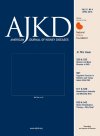Predicting Kidney Failure With the Kidney Failure Risk Equation: Time to Rethink Probabilities
The rate of disease progression varies highly among individuals with chronic kidney disease (CKD). To better elucidate individual risks for progression to kidney failure and improve personalized medicine, patients and physicians have access to a multitude of clinical prediction models,1 which combine multiple prognostic factors into a single individual risk for kidney failure. One of the most used kidney failure prediction models is the 4-variable Kidney Failure Risk Equation (KFRE), developed by Tangri et al,2 which combines age, sex, urinary albumin-creatinine ratio, and estimated glomerular filtration rate (eGFR) to calculate the 2-year and 5-year risks of kidney failure for an individual patient.



